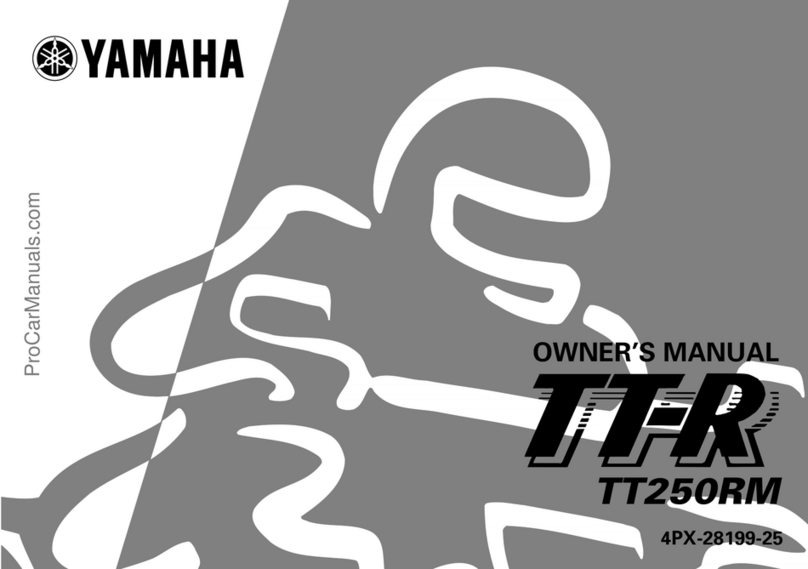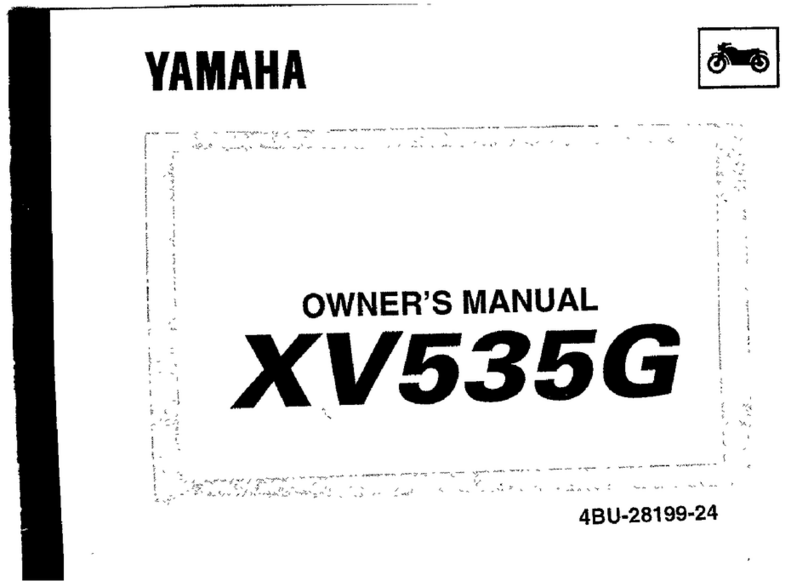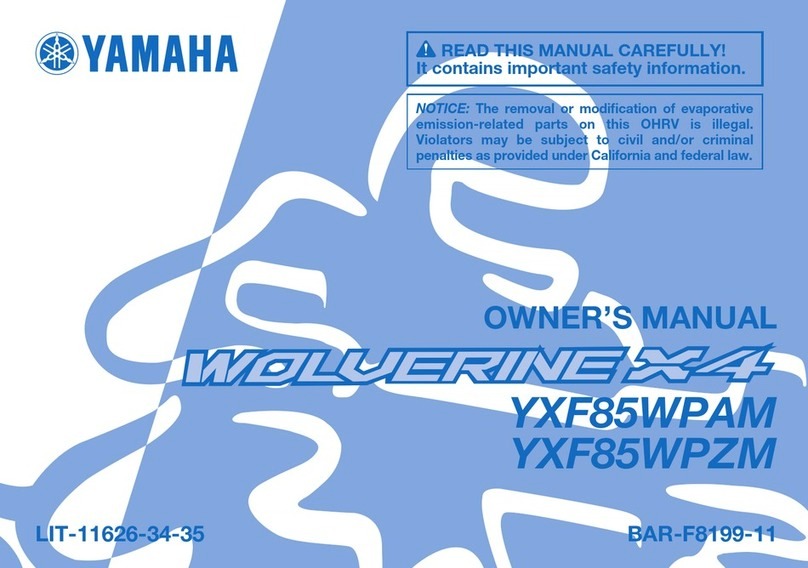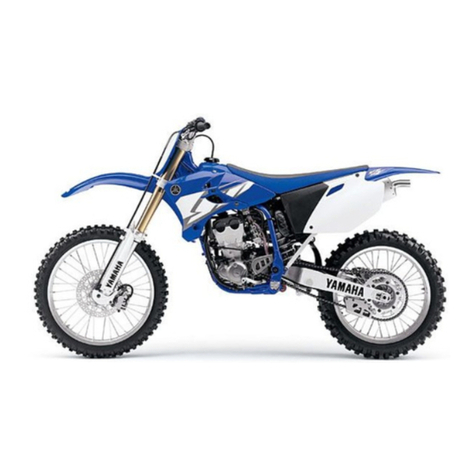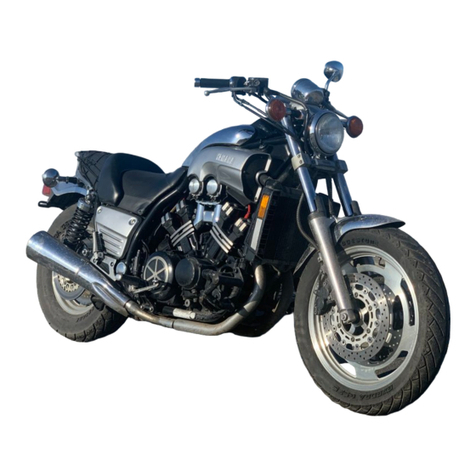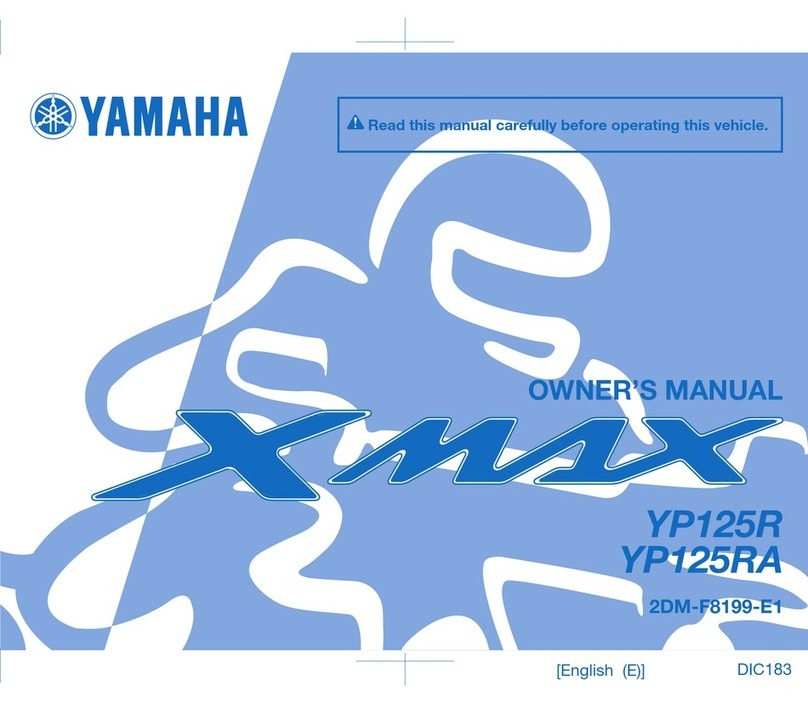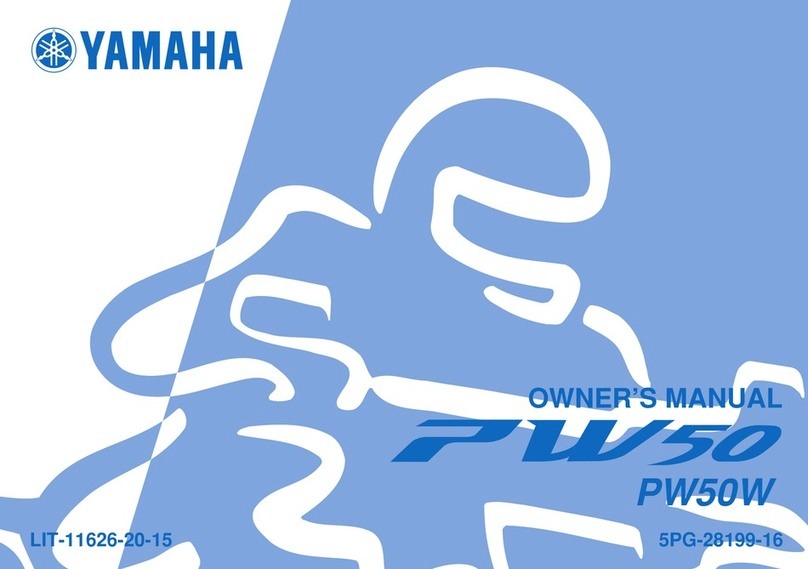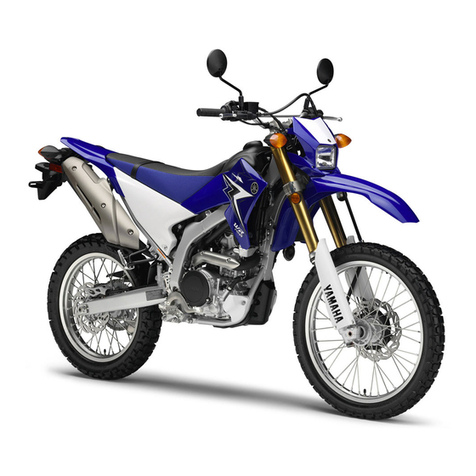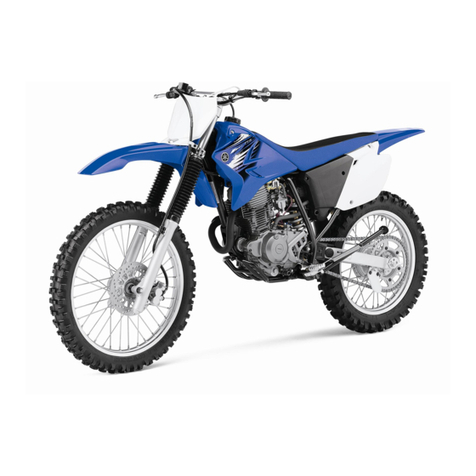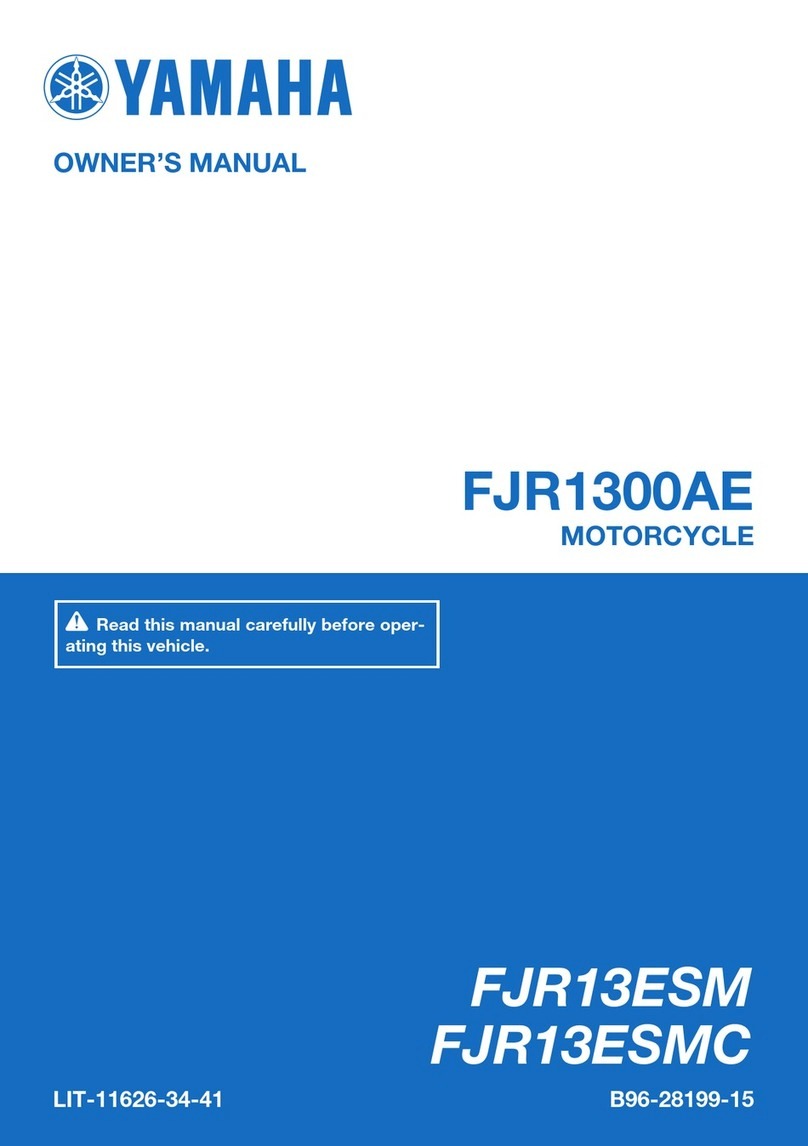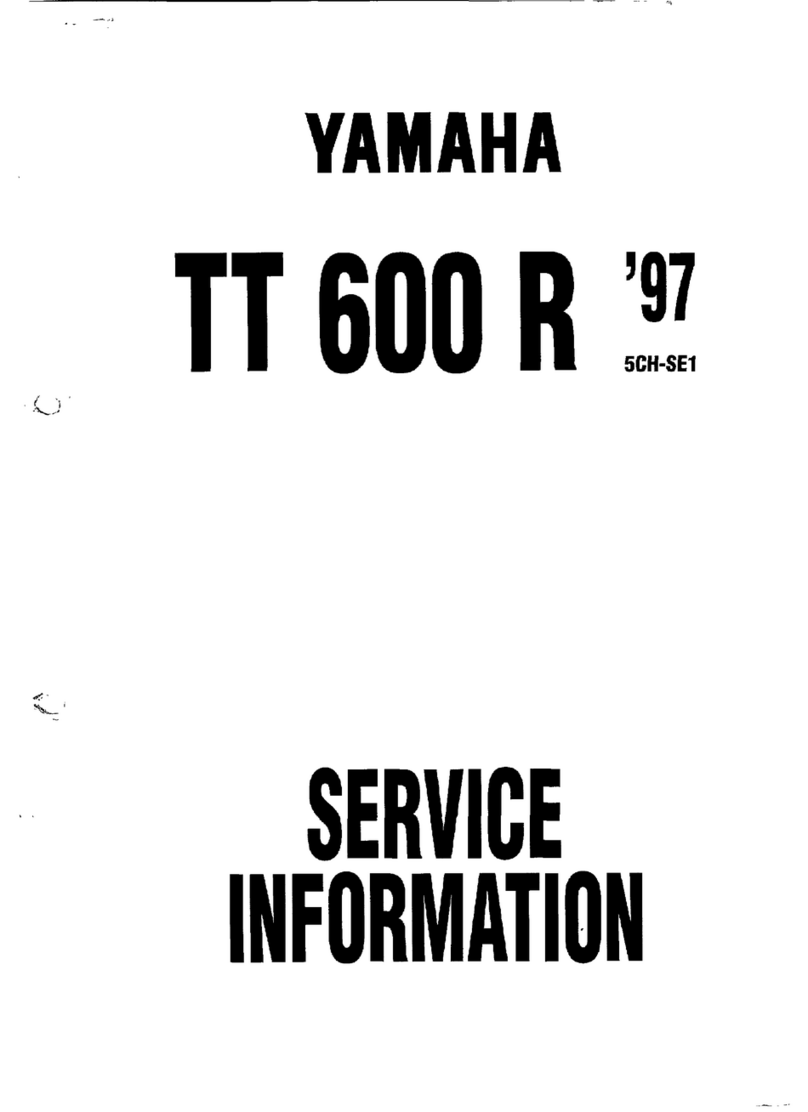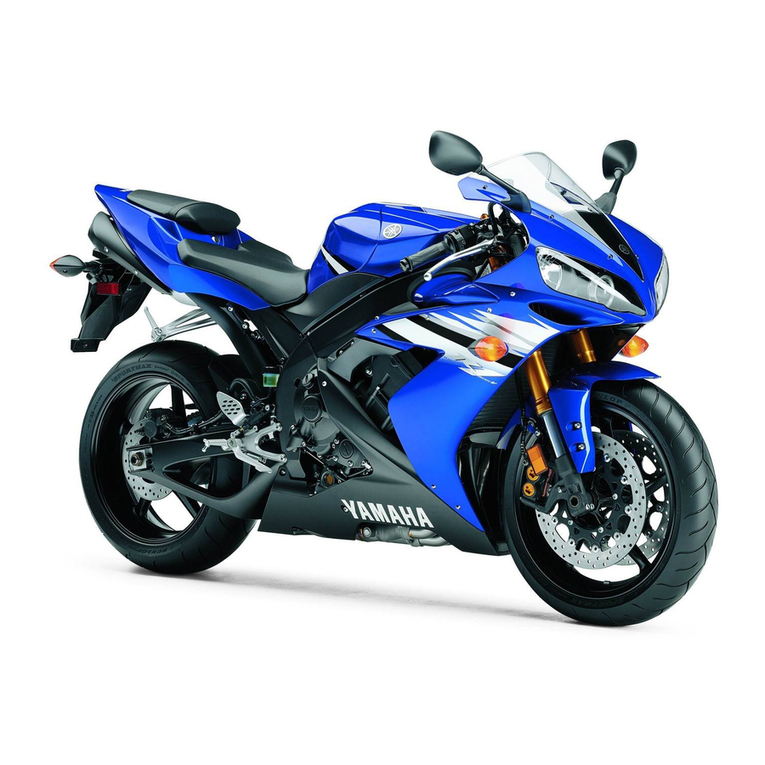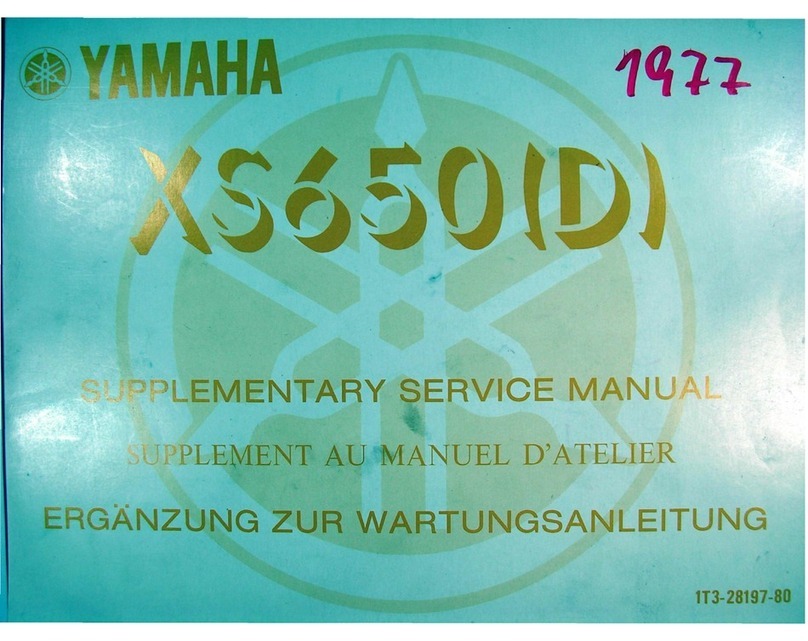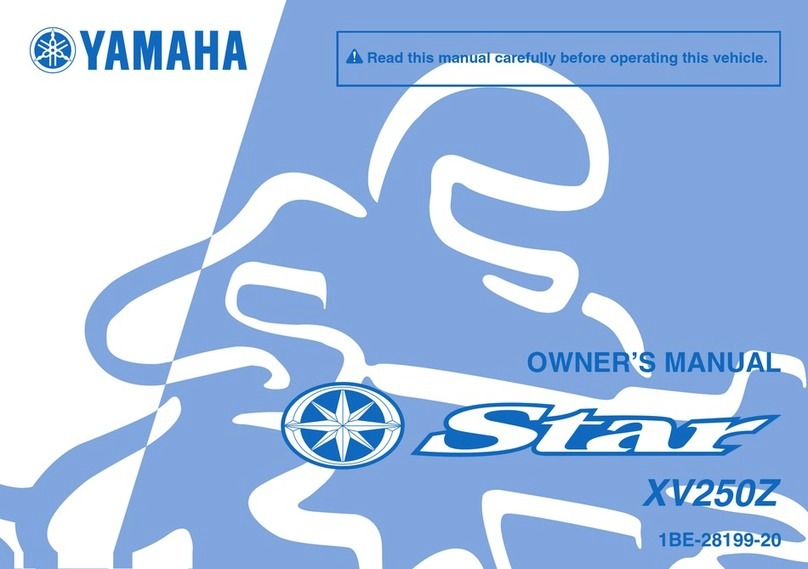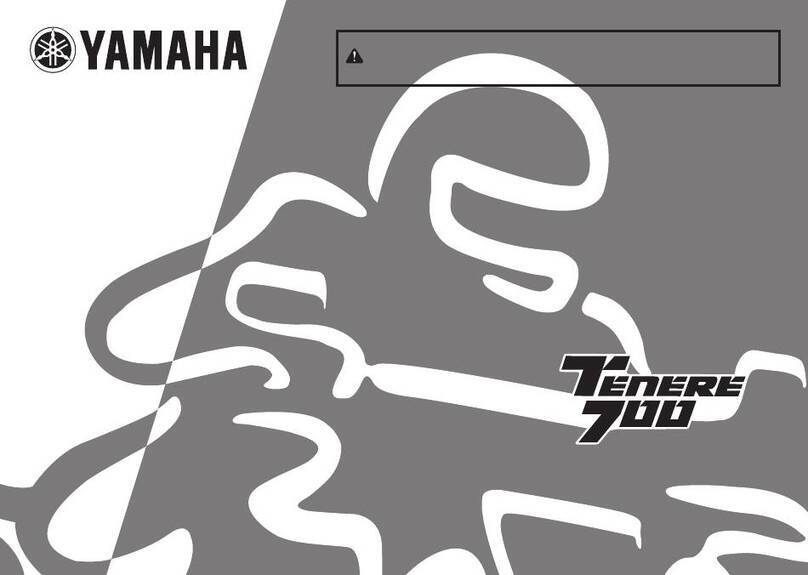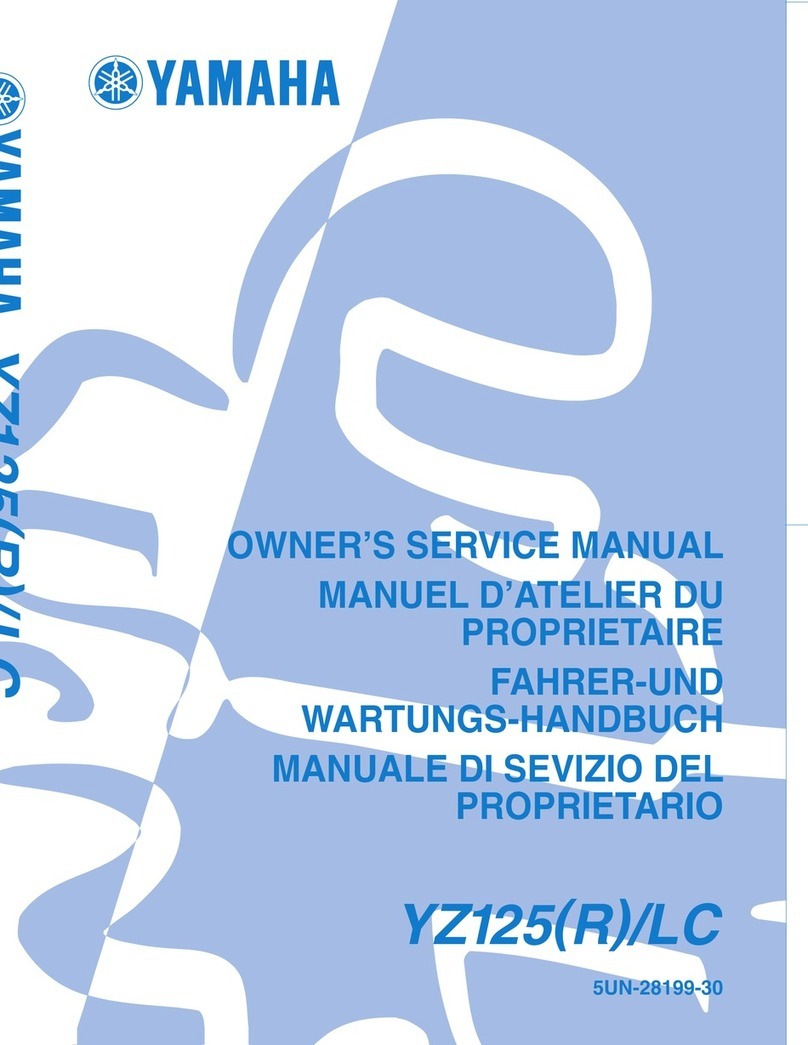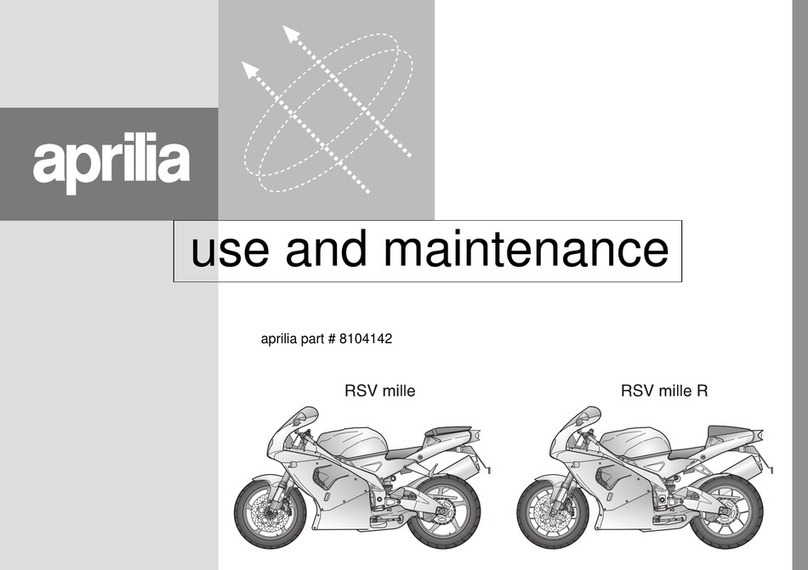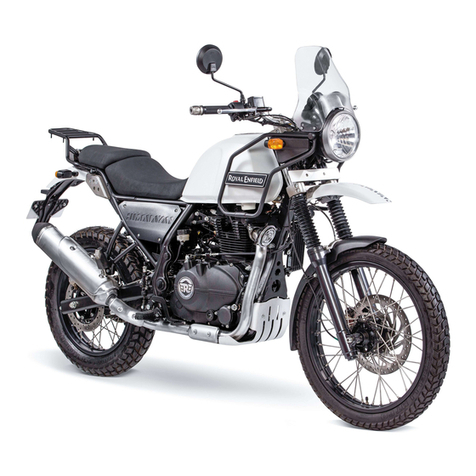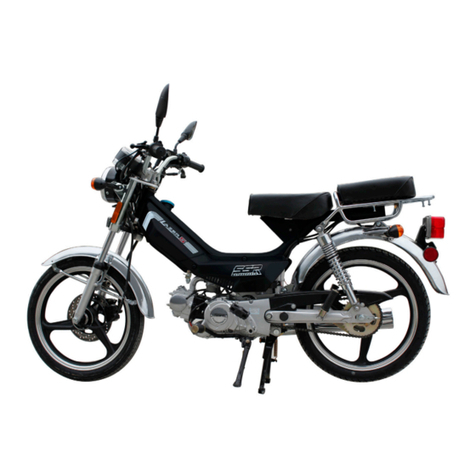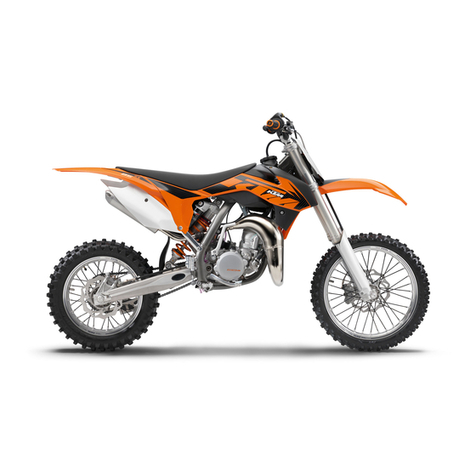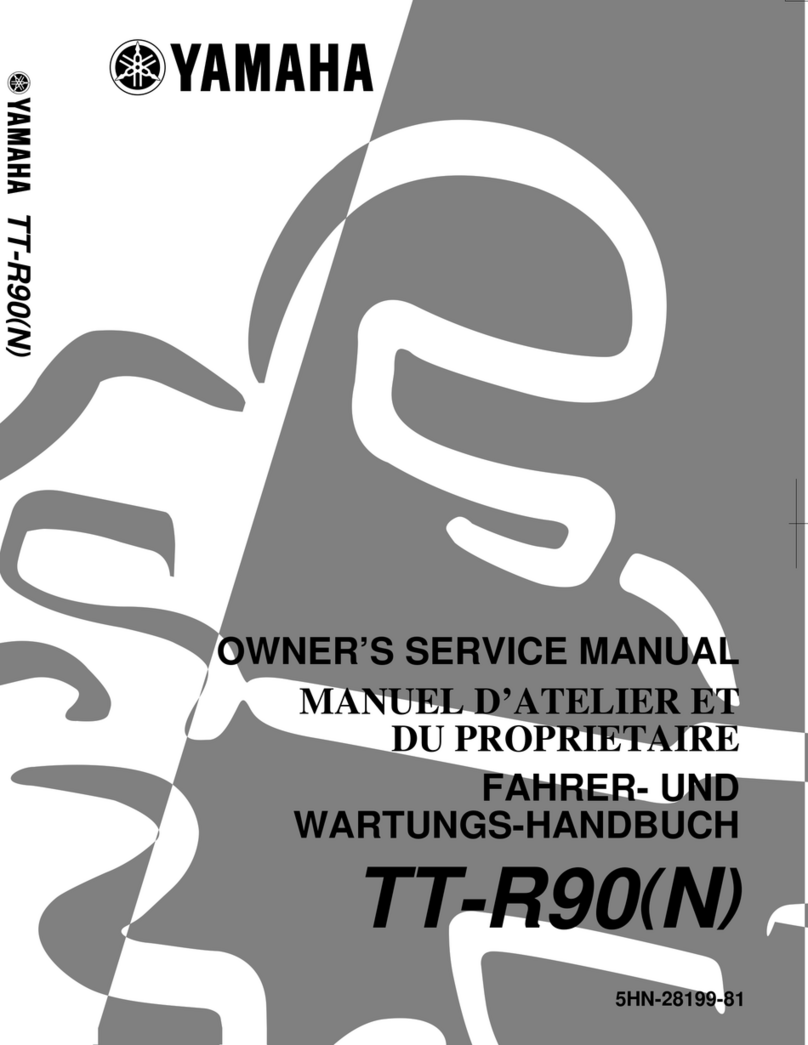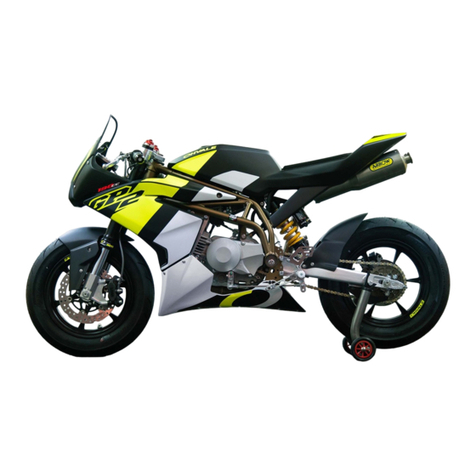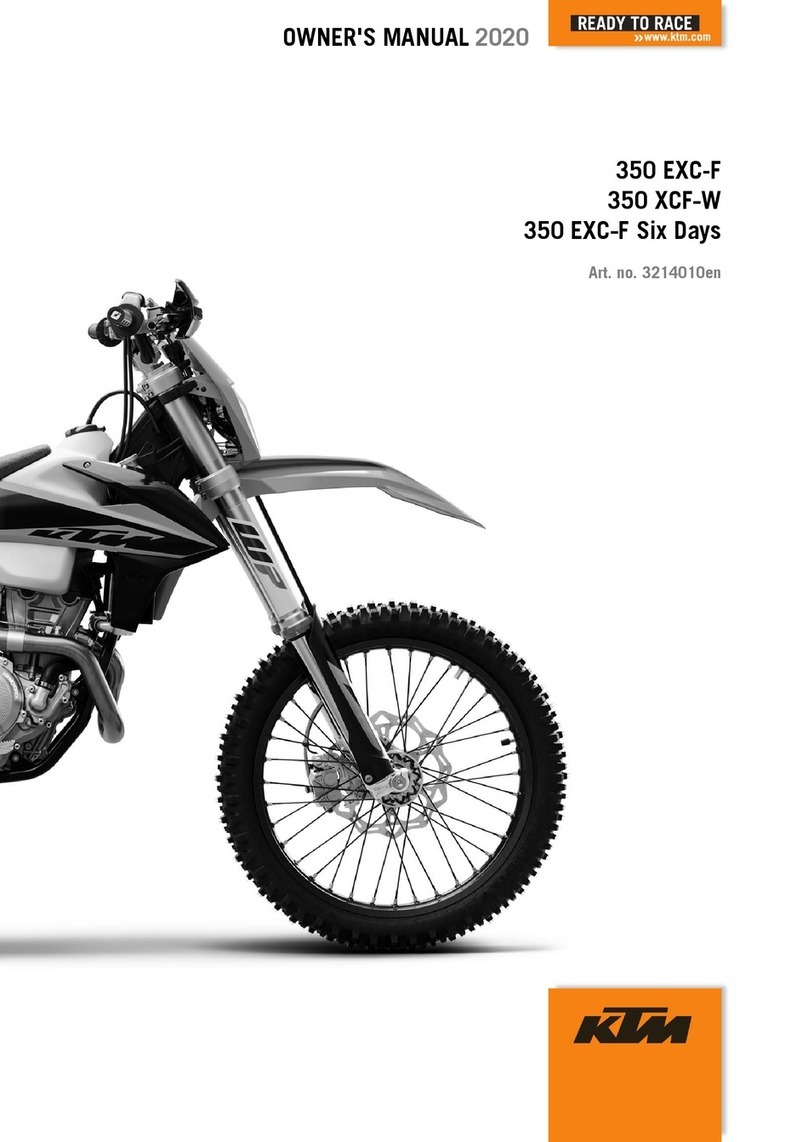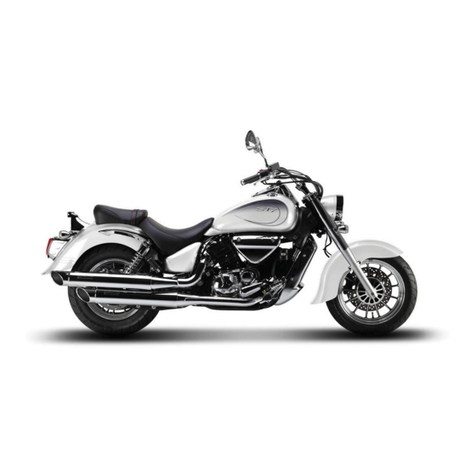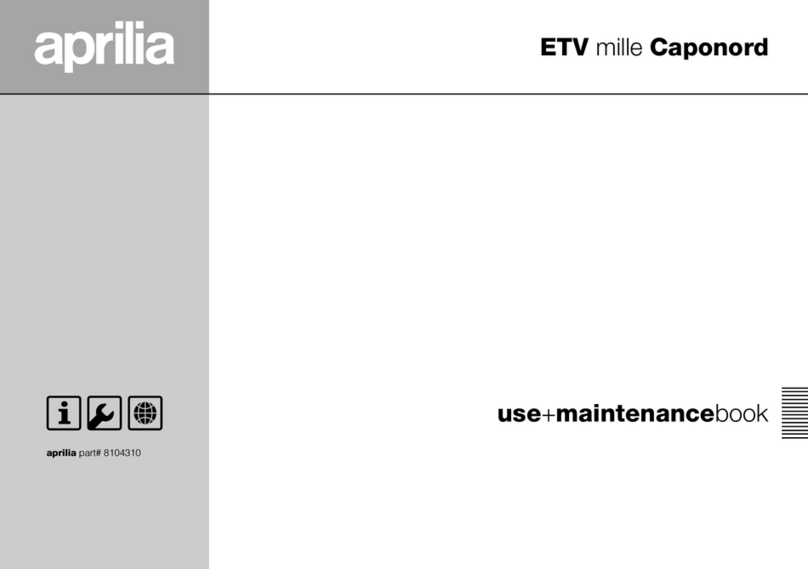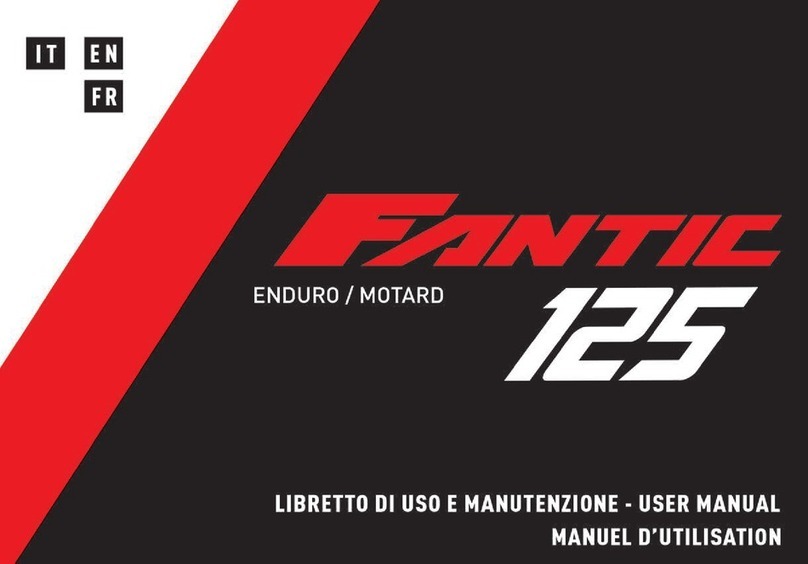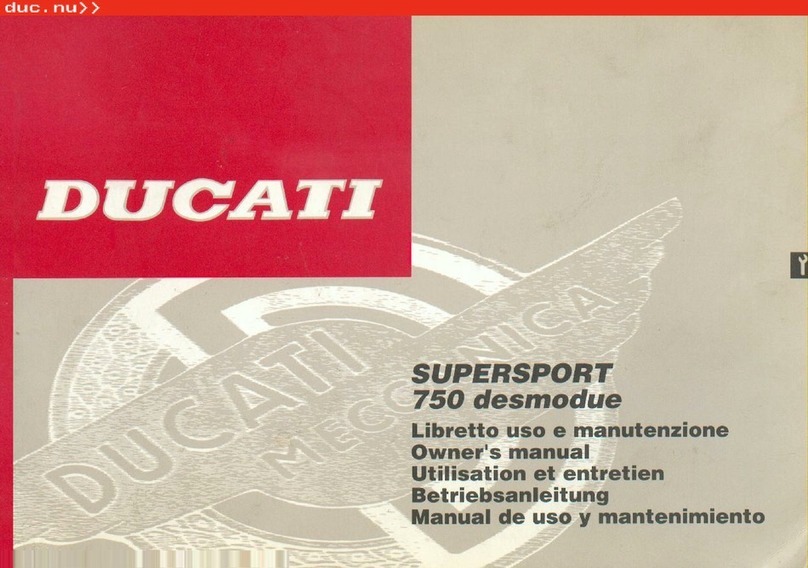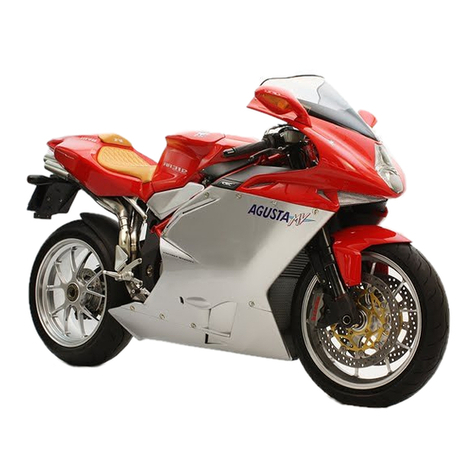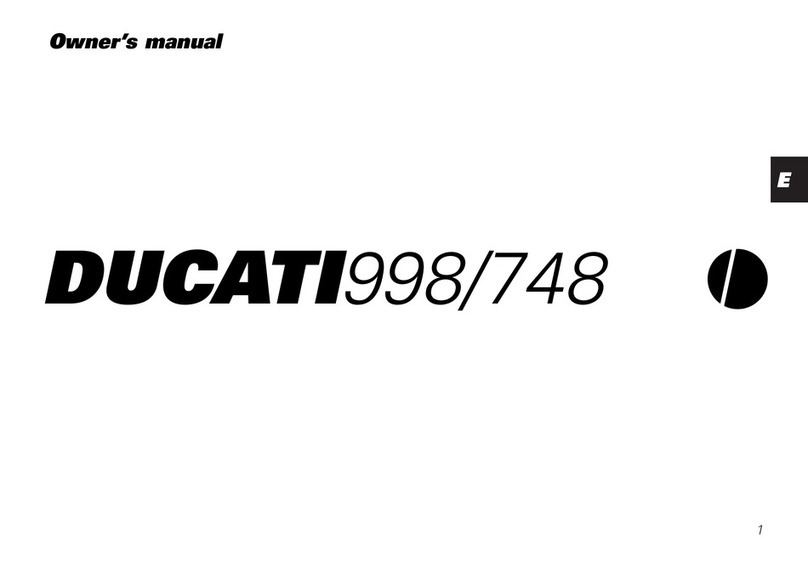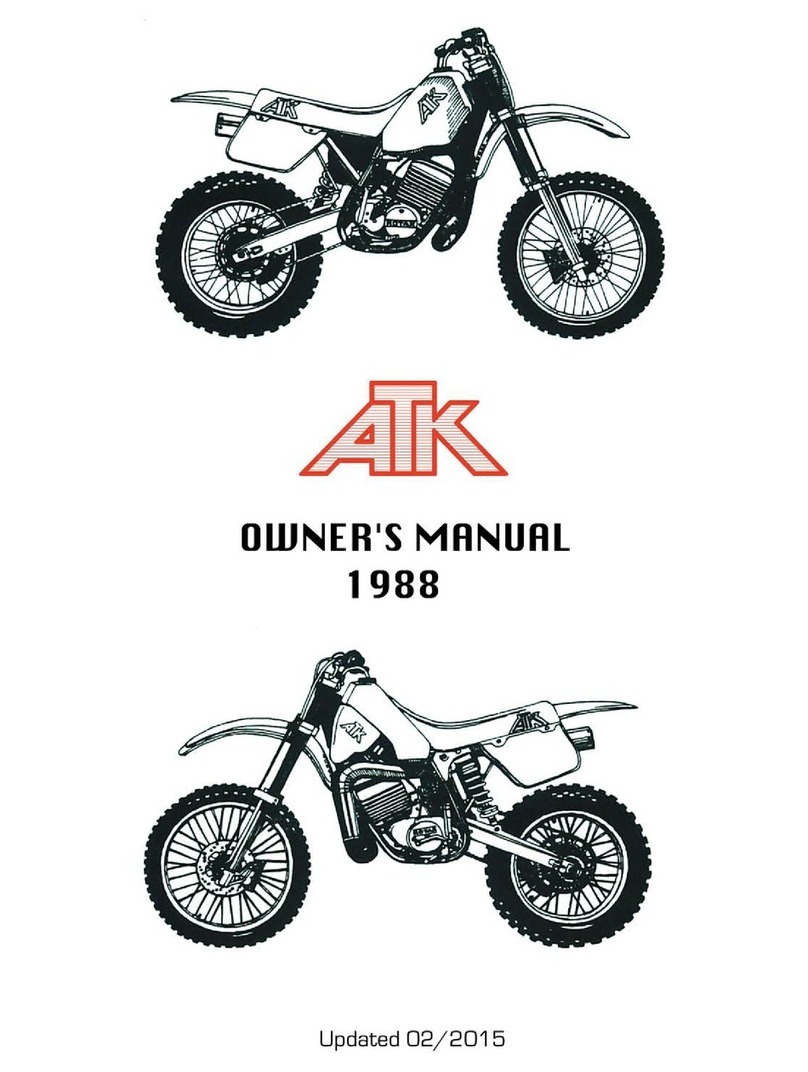
Table of contents
Safety information............................ 1-1
Description ....................................... 2-1
Left view ......................................... 2-1
Right view....................................... 2-2
Controls and instruments ............... 2-3
Instrument andcontrol functions... 3-1
Immobilizer system......................... 3-1
Main switch/steering lock............... 3-2
Indicator lights and warning
lights............................................ 3-3
Multi-function meter unit ................ 3-6
D-mode (drive mode).................... 3-17
Handlebar switches...................... 3-18
Clutch lever .................................. 3-20
Shift pedal .................................... 3-20
Brake lever.................................... 3-20
Brake pedal .................................. 3-21
ABS .............................................. 3-21
Traction control system................ 3-22
Fuel tank cap................................ 3-24
Fuel............................................... 3-25
Fuel tank overflow hose ............... 3-26
Catalytic converter ....................... 3-27
Seats ............................................ 3-27
Adjusting the rider seat height...... 3-29
Helmet holder ............................... 3-31
Storage compartment .................. 3-31
Windshield ................................... 3-32
Adjusting the headlight beams..... 3-32
Handlebar position .......................3-32
Adjusting the front fork .................3-33
Adjusting the shock absorber
assembly....................................3-34
Auxiliary DC jack ...........................3-36
Auxiliary DC connector .................3-36
Sidestand ......................................3-37
Ignition circuit cut-off system .......3-37
For your safety – pre-operation
checks ...............................................4-1
Operation andimportant riding
points .................................................5-1
Starting the engine..........................5-1
Shifting ............................................5-2
Tips for reducing fuel
consumption................................5-3
Engine break-in...............................5-4
Parking ............................................5-4
Periodic maintenance and
adjustment ........................................6-1
Tool kit ............................................6-2
Periodic maintenance charts ..........6-3
Periodic maintenance chart for the
emission control system..............6-3
General maintenance and
lubrication chart...........................6-5
Removing and installing the
panel ............................................6-9
Checking the spark plugs............. 6-10
Canister ........................................ 6-11
Engine oil ...................................... 6-11
Why Yamalube.............................. 6-13
Coolant ......................................... 6-14
Air filter element............................ 6-15
Checking the engine idling
speed ........................................ 6-15
Checking the throttle grip free
play............................................ 6-16
Valve clearance............................. 6-16
Tires .............................................. 6-16
Cast wheels .................................. 6-19
Adjusting the clutch lever free
play............................................ 6-19
Checking the brake lever free
play............................................ 6-20
Brake light switches ..................... 6-20
Checking the front and rear
brake pads ................................ 6-21
Checking the brake fluid level ...... 6-21
Changing the brake fluid .............. 6-23
Drive chain slack........................... 6-23
Cleaning and lubricating the
drive chain................................. 6-25
Checking and lubricating the
cables........................................ 6-25
Checking and lubricating the
throttle grip and cable............... 6-26
Checking and lubricating the
brake and shift pedals............... 6-26
UB5CE1E0.book Page 1 Monday, August 6, 2018 1:13 PM
